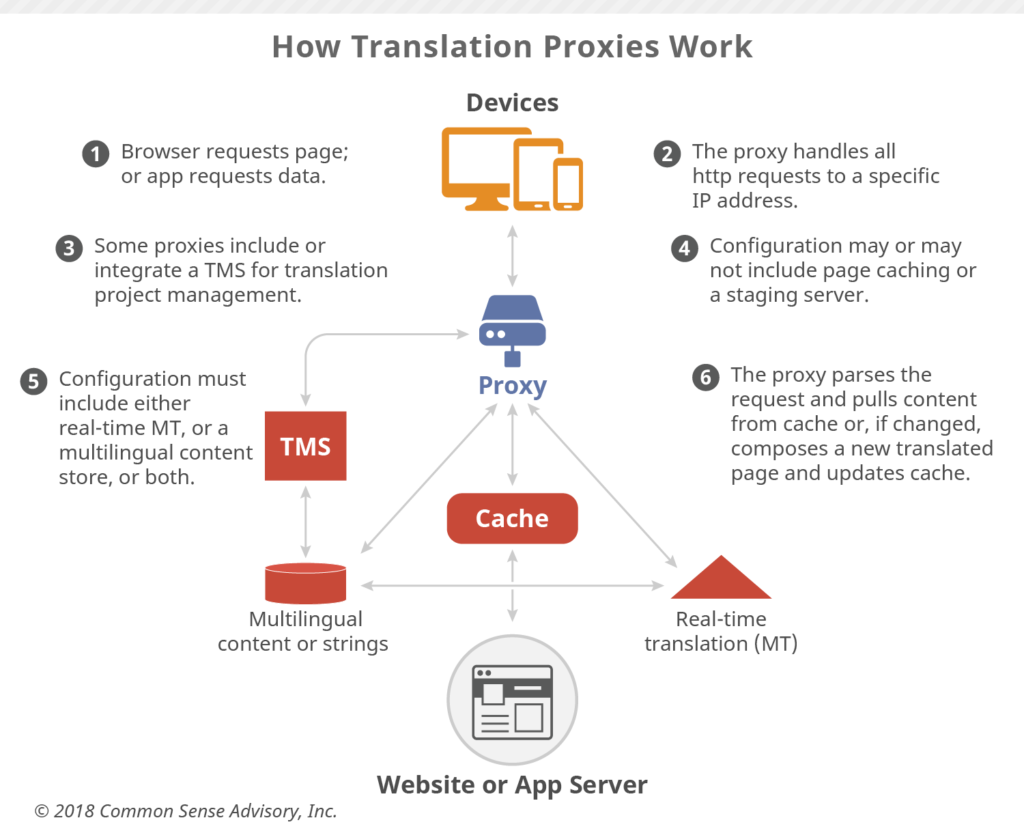WPML vs proxy
There are a few options when it comes to Wordpress website translation. The most popular choices are using WPML and proxying an external system: WPML vs proxy
Google had their own translation tool that could be dropped on your website – it’s retired it to the ever-growing Google graveyard – and Chrome will offer to translate to the user’s language, but these options do next to nothing for SEO and ignore language nuances because they’re built using machine learning.
Below are my thoughts based on the experience of moving a website from translating via WPML to translating via an external proxy.
WPML (Wordpress Multilingual) plugin
I came into a web development project at the end of a SaaS company’s long run using WPML. The SaaS company wanted their public-facing website to move on from WPML because the content became too cumbersome to keep up-to-date and they were looking into adding five more languages.
At that time, content translation for three languages was managed internally and those localized sites were only accessible using URL perimeters – which isn’t good for multilingual SEO.
Using centralized data sources and custom content types, translated website management using WPML doesn’t have to be difficult or inefficient – especially if you’re using a custom Wordpress theme. But when done incorrectly, it can really start to slow website edits & additions down because you wind up repeating yourself and also repeating yourself.
With that said, there’s another direction – which is where this company took their website translation processes – that I usually suggest other websites take their translation needs as well.
External translation proxy
While WPML is a great and essentially free plugin that can internationalize your website, a different approach is using an external source to proxy your content and serve translated variations based on the the current translated version.
External proxy content is digested and managed in strings using their surrounding HTML tags; so titles, excerpts, buttons, and even ALT text are separate to each other. This concept might seem burdensome but it’s very helpful when updating parts of your content and not having to retranslate entire sections. Most external proxies allow you to define branded terms and non-translated content sections of your website, also very helpful when you’re dealing with data that is branded, non-translatable, or dynamic like:
- Numbers & maybe dates
- Testimonials & reviews
- Company & people names
- Branded product or service names

Moving from WPML to external proxy
There will be things to do if you’re not starting off a translation project from scratch. One of the most important differences between WPML and external proxy is the amount of pages that exist. So what were once four pages will now be only one page, which means that old content has to be removed and possibly 301-redirected depending on your URL structure.
This is no easy task and there could be lots of manual work involved so of course it’s highly suggested that you implement a content freeze and use a staging instance of your website to make the changes.
Hey!
